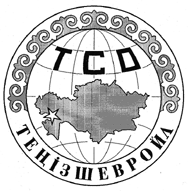No doubt people have been buying up luncheon tickets to hear PetroNewf chief executive officer Ed Martin explain how a Crown corporation with absolutely no experience in oil and gas is somehow going to muscle its way into the oil and gas business.
The real value of this conference is the working sessions [see agenda] and anyone with tickets is going to get a real earful of solid information.
The morning sessions focus on heavy oil and the Hebron project. It promises to be a heavily technical discussion.
The provincial government and the companies are still trying to figure out a benefits deal, so the project is not ready for sanction, that is, it isn't ready to go to the offshore board for approval. Premier Williams appears to be trying to saddle Hebron with a host of "local benefits" that aren't needed to bring the field on stream, which will drive up the cost of development and in the process might well reduce the revenue stream to the provincial government - much like the Peckford-era Hibernia deal.
At some point - maybe in four years time when Danny Williams is out of office - the companies can cut a deal with the provincial government and the project will finally start. Major international companies like Chevron make long-range plans, and as the Kazakhstan projects demonstrate, they are quite prepared to work diligently over a long period of time for the right moment to develop the right oil field. Having spent 20 years waiting to bring Hebron on stream, the consortium can hardly be deterred by the prospect of waiting for a few more years just like INCO waited for Brian Tobin to get bored.
In the meantime, Martin and Williams will try and build PetroNewf into something that will either compete with local private enterprise or, more likely, just muscle local companies into a subordinate position in the oil patch.
 (Left) TengizChevroil logo
(Left) TengizChevroil logoFor anyone who thinks that Hebron is a big play for Chevron and the other partners, think of this. Since the late 1990s, Chevron has been heavily involved in developing oil reserves in the former Soviet Union. In 2001, they opened a new pipeline to take gas from the Caspian Sea to market. The Tengiz field, for example contains an estimated six to nine billion barrels of oil.
Compare that to the 700 hundred million in Hebron, most of which is heavy oil that is costly to produce especially in the harsh North Atlantic environment.
The afternoon sessions on potential gas development promise to be more interesting, especially in light of the Premier's comments to The Telegram about not wanting to see gas stuffed into a "God damn boat" and floated down the coast, presumably to markets where people could actually buy the gas.
The Premier's comments are odd, since there is a very small potential market, if any at all, for natural gas within the province.
In 1998 and 2001, NOIA conducted a two-part study into potential gas development. You can find Phase One report, or scoping study, here and the Phase Two report, which examined critical issues, here.
The market analysis carried out in 2001 by ICT Consulting predicted continued strong growth in American natural gas markets and that has held true. Likewise, the assessment that there is a limited local market for these products has also remained true.
 (Right) One of the Premier's despised "God damn" but locally-owned compressed natural gas ships could earn the province millions in added revenue through the private sector.
(Right) One of the Premier's despised "God damn" but locally-owned compressed natural gas ships could earn the province millions in added revenue through the private sector.Technological changes, including exploration of new shipping technologies with local business ties, open up new ways of exploiting the estimated eight trillion cubic feet of natural gas offshore Newfoundland and Labrador.
Given that these studies are about five to eight years old, it might be timely to have another look at the potential to develop gas reserves. Changes in price, for example may make it more attractive to begin development of something less than the total available reserves, with production commencing around 2010 or slightly afterward. The one thing that isn't likely to change is the small local demand for natural gas.